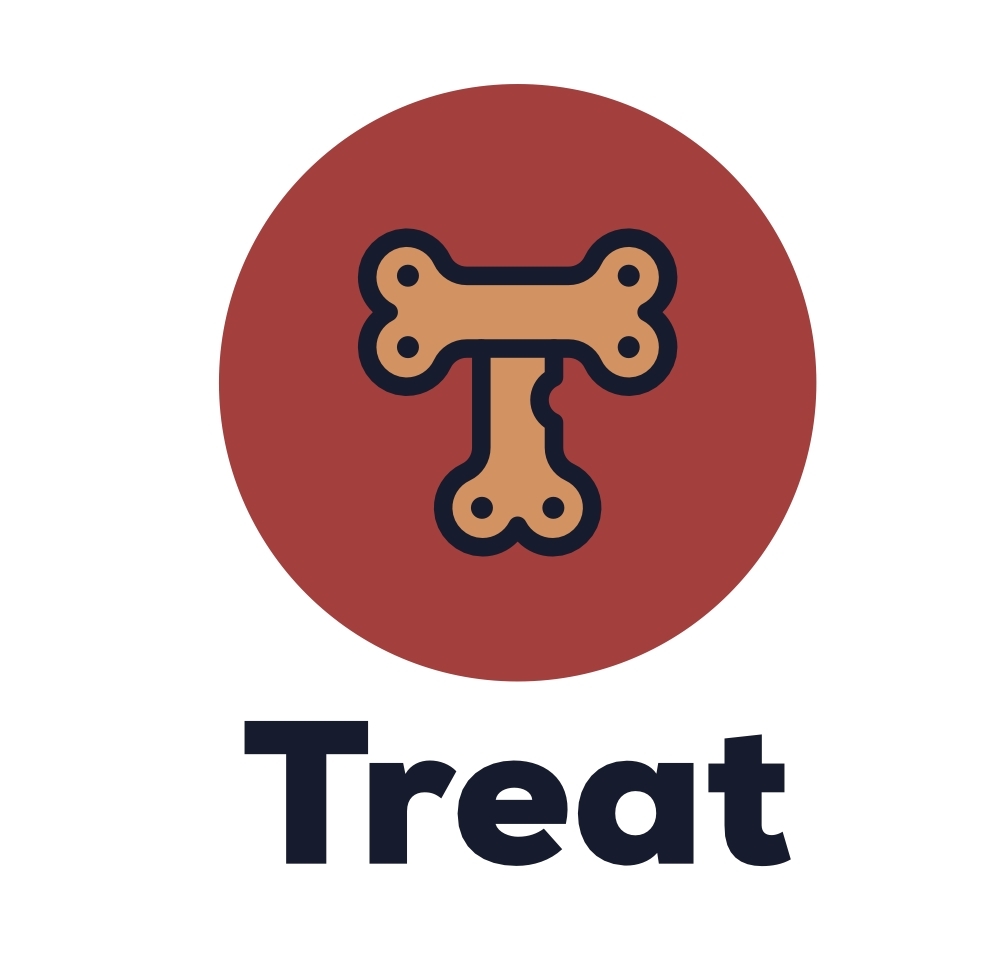Bitget:日次取引量の世界ランキングでトップ4にランクイン!
BTCマーケットシェア62.52%
Bitgetの新規上場 : Pi Network
BTC/USDT$84764.01 (+1.97%)恐怖・強欲指数45(ニュートラル)
アルトコインシーズン指数:0(ビットコインシーズン)
プレマーケットに上場した通貨PAWS,WCTビットコイン現物ETFの純流入総額(-$1M(1日)、-$872.6M(7日))。6,200 USDT相当の新規ユーザー向けウェルカムギフトパッケージ。今すぐ獲得する
Bitgetアプリでいつでもどこでも取引しましょう今すぐダウンロードする
Bitget:日次取引量の世界ランキングでトップ4にランクイン!
BTCマーケットシェア62.52%
Bitgetの新規上場 : Pi Network
BTC/USDT$84764.01 (+1.97%)恐怖・強欲指数45(ニュートラル)
アルトコインシーズン指数:0(ビットコインシーズン)
プレマーケットに上場した通貨PAWS,WCTビットコイン現物ETFの純流入総額(-$1M(1日)、-$872.6M(7日))。6,200 USDT相当の新規ユーザー向けウェルカムギフトパッケージ。今すぐ獲得する
Bitgetアプリでいつでもどこでも取引しましょう今すぐダウンロードする
Bitget:日次取引量の世界ランキングでトップ4にランクイン!
BTCマーケットシェア62.52%
Bitgetの新規上場 : Pi Network
BTC/USDT$84764.01 (+1.97%)恐怖・強欲指数45(ニュートラル)
アルトコインシーズン指数:0(ビットコインシーズン)
プレマーケットに上場した通貨PAWS,WCTビットコイン現物ETFの純流入総額(-$1M(1日)、-$872.6M(7日))。6,200 USDT相当の新規ユーザー向けウェルカムギフトパッケージ。今すぐ獲得する
Bitgetアプリでいつでもどこでも取引しましょう今すぐダウンロードする



Treatの価格TREAT
上場済み
決済通貨:
JPY
¥0.5854+0.74%1D
TREATからJPYへの交換
TREAT
JPY
1 TREAT = 0.00 JPY
Bitgetは、主要取引プラットフォームの中で最も低い取引手数料を提供しています。VIPレベルが高ければ高いほど、より有利なレートが適用されます。
価格
TradingView
時価総額
Treatの価格チャート(TREAT/JPY)
最終更新:2025-04-13 04:50:12(UTC+0)
時価総額:--
完全希薄化の時価総額:--
24時間取引量:--
24時間取引量 / 時価総額:0.00%
24時間高値:¥0.6069
24時間安値:¥0.5739
過去最高値:¥22.38
過去最安値:¥0.1435
循環供給量:-- TREAT
総供給量:
--TREAT
流通率:0.00%
最大供給量:
--TREAT
BTCでの価格:135.59 BTC
ETHでの価格:-- ETH
BTC時価総額での価格:
--
ETH時価総額での価格:
--
コントラクト:--
Treatに投票しましょう!
注:この情報はあくまでも参考情報です。
TreatのAI分析レポート
本日の暗号資産市場のハイライトレポートを見る
本日のTreat価格(JPY)
現在、Treatの価格は¥0.5854 JPYで時価総額は--です。Treatの価格は過去24時間で0.74%上昇し、24時間の取引量は¥0.00です。TREAT/JPY(TreatからJPY)の交換レートはリアルタイムで更新されます。
Treatの価格履歴(JPY)
Treatの価格は、この1年で+308.00%を記録しました。直近1年間のJPY建てTREATの最高値は¥22.38で、直近1年間のJPY建てTREATの最安値は¥0.1435でした。
時間価格変動率(%) 最低価格
最低価格 最高価格
最高価格 
 最低価格
最低価格 最高価格
最高価格 
24h+0.74%¥0.5739¥0.6069
7d-0.73%¥0.4706¥0.6500
30d-16.22%¥0.4706¥0.7619
90d-69.18%¥0.4706¥1.9
1y+308.00%¥0.1435¥22.38
すべての期間+308.00%¥0.1435(--, 今日 )¥22.38(--, 今日 )
Treatの最高価格はいくらですか?
Treatの過去最高値(ATH)は¥22.38 JPYで、に記録されました。TreatのATHと比較すると、Treatの現在価格は97.38%下落しています。
Treatの最安価格はいくらですか?
Treatの過去最安値(ATL)は¥0.1435 JPYで、に記録されました。TreatのATLと比較すると、Treatの現在価格は308.00%上昇しています。
Treatの価格予測
2026年のTREATの価格はどうなる?
TREATの過去の価格パフォーマンス予測モデルによると、TREATの価格は2026年に¥0.00に達すると予測されます。
2031年のTREATの価格はどうなる?
2031年には、TREATの価格は+14.00%変動する見込みです。 2031年末には、TREATの価格は¥0.00に達し、累積ROIは-100.00%になると予測されます。
よくあるご質問
Treatの現在の価格はいくらですか?
Treatのライブ価格は¥0.59(TREAT/JPY)で、現在の時価総額は-- JPYです。Treatの価値は、暗号資産市場の24時間365日休みない動きにより、頻繁に変動します。Treatのリアルタイムでの現在価格とその履歴データは、Bitgetで閲覧可能です。
Treatの24時間取引量は?
過去24時間で、Treatの取引量は--です。
Treatの過去最高値はいくらですか?
Treat の過去最高値は¥22.38です。この過去最高値は、Treatがローンチされて以来の最高値です。
BitgetでTreatを購入できますか?
はい、Treatは現在、Bitgetの取引所で利用できます。より詳細な手順については、お役立ちtreatの購入方法 ガイドをご覧ください。
Treatに投資して安定した収入を得ることはできますか?
もちろん、Bitgetは戦略的取引プラットフォームを提供し、インテリジェントな取引Botで取引を自動化し、利益を得ることができます。
Treatを最も安く購入できるのはどこですか?
戦略的取引プラットフォームがBitget取引所でご利用いただけるようになりました。Bitgetは、トレーダーが確実に利益を得られるよう、業界トップクラスの取引手数料と流動性を提供しています。
Treatに関するニュース
もっと見る
Treatの最新情報
Treat市場
Treatの集中度別保有量
大口
投資家
リテール
Treatの保有時間別アドレス
長期保有者
クルーザー
トレーダー
coinInfo.name(12)のリアル価格チャート

Treatのグローバル価格
現在、Treatは他の通貨の価値でいくらですか?最終更新:2025-04-13 04:50:12(UTC+0)
TREAT から MXN
Mexican Peso
$0.08TREAT から GTQGuatemalan Quetzal
Q0.03TREAT から CLPChilean Peso
$4.02TREAT から HNLHonduran Lempira
L0.11TREAT から UGXUgandan Shilling
Sh14.96TREAT から ZARSouth African Rand
R0.08TREAT から TNDTunisian Dinar
د.ت0.01TREAT から IQDIraqi Dinar
ع.د5.33TREAT から TWDNew Taiwan Dollar
NT$0.13TREAT から RSDSerbian Dinar
дин.0.42TREAT から DOPDominican Peso
$0.25TREAT から MYRMalaysian Ringgit
RM0.02TREAT から GELGeorgian Lari
₾0.01TREAT から UYUUruguayan Peso
$0.18TREAT から MADMoroccan Dirham
د.م.0.04TREAT から AZNAzerbaijani Manat
₼0.01TREAT から OMROmani Rial
ر.ع.0TREAT から SEKSwedish Krona
kr0.04TREAT から KESKenyan Shilling
Sh0.53TREAT から UAHUkrainian Hryvnia
₴0.17- 1
- 2
- 3
- 4
- 5
Treat(TREAT)の購入方法

無料でBitgetアカウントを作成します
Eメールアドレス/携帯電話番号でBitgetに登録し、アカウントを保護するために強力なパスワードを作成します。

アカウントを認証する
個人情報を入力し、有効な写真付き身分証明書をアップロードして本人確認(KYC認証)を行います。

TreatをTREATに交換
Bitgetで取引する暗号資産を選択します。
詳細はこちらエリートトレーダーをフォローして、TREATのコピートレードを始めましょう。
Bitgetに登録し、USDTまたはTREATトークンを購入した後、エリートトレーダーをフォローしてコピートレードを開始することもできます。
もっと購入する
Treat(TREAT)はどこで買えますか?
動画セクション - 素早く認証を終えて、素早く取引へ

Bitgetで本人確認(KYC認証)を完了し、詐欺から身を守る方法
1. Bitgetアカウントにログインします。
2. Bitgetにまだアカウントをお持ちでない方は、アカウント作成方法のチュートリアルをご覧ください。
3. プロフィールアイコンにカーソルを合わせ、「未認証」をクリックし、「認証する」をクリックしてください。
4. 発行国または地域と身分証の種類を選択し、指示に従ってください。
5. 「モバイル認証」または「PC」をご希望に応じて選択してください。
6. 個人情報を入力し、身分証明書のコピーを提出し、自撮りで撮影してください。
7. 申請書を提出すれば、本人確認(KYC認証)は完了です。
Bitgetを介してオンラインでTreatを購入することを含む暗号資産投資は、市場リスクを伴います。Bitgetでは、簡単で便利な購入方法を提供しており、取引所で提供している各暗号資産について、ユーザーに十分な情報を提供するよう努力しています。ただし、Treatの購入によって生じる結果については、当社は責任を負いかねます。このページおよび含まれる情報は、特定の暗号資産を推奨するものではありません。
TREATからJPYへの交換
TREAT
JPY
1 TREAT = 0.5854 JPY
Bitgetは、主要取引プラットフォームの中で最も低い取引手数料を提供しています。VIPレベルが高ければ高いほど、より有利なレートが適用されます。
TREATの各種資料
Treatの評価
コミュニティからの平均評価
4.3
このコンテンツは情報提供のみを目的としたものです。
Bitgetインサイト

CryptoPotato
2日
Here’s Why Shiba Inu’s SHI Stablecoin Is Still Waiting for Its Big Debut
TL;DR
The stablecoin SHI is one of the tokens within the Shiba Inu ecosystem that remains under development, with no official release date announced yet. It will aim to provide price stability within the Shibarium network and is intended to maintain a peg of $0.01, differing from the typical $1 target of many well-known stablecoins.
Earlier this week, one of the popular Shiba Inu developers, Kaal Dhairya, said the team is waiting on “clear stablecoin regulations” before moving forward with SHI.
Recall that the US House Financial Services Committee passed the Stablecoin Transparency and Accountability for a Better Ledger Economy (STABLE) Act on April 23. The next stages of approval include passing a full House vote and a Senate vote. The bill seeks to create a regulatory framework for payment stablecoins, requiring issuers to disclose information about their reserves and operational practices.
According to Bryan Steil (Chairman of the House Financial Services Subcommittee on Digital Assets, Financial Technology, and Artificial Intelligence), it also gives the Office of the Comptroller of the Currency (OCC) “the authority to approve and supervise federally qualified nonbank payment stablecoin issuers.”
“The STABLE Act protects consumers while cementing the US dollar as the world’s reserve currency and promoting the next generation of Web3 businesses here in the United States,” he added.
For his part, Congressman Dan Meuser claimed the legislation will “make payments faster, cheaper, and more accessible, reducing costs to the benefit of businesses and consumers alike.”
Contrary to SHI, additional assets within the Shiba Inu ecosystem are active and tradable on various cryptocurrency exchanges.
Doge Killer (LEASH) is one example. It is designed to complement the primary SHIB token and allows users to participate in staking rewards, metaverse developments, and exclusive NFT offerings. Some of the trading venues supporting LEASH include Crypto.com , Gate.io, and others.
BONE ShibaSwap (BONE) is next in line. It plays a role in Shiba Inu’s layer-2 scaling solution, Shibarium, by facilitating transactions and contributing to its efficiency.
Lastly, we will touch upon Shiba Inu Treat (TREAT), which went live in January this year. The token is designed to enhance utility and engagement across the network’s projects and provide liquidity for the upcoming stablecoin SHI.
ACT-3.28%
DOGE-1.40%

Coinedition
2日
Taxing Times in Ukraine: Crypto Cash-Outs Face 23%, Trading Exempt
Ukraine’s National Securities and Stock Market Commission (NSSMC) has proposed taxing cryptocurrency transactions nationwide. Key details from the NSSMC’s submitted framework outline an 18% income tax and a 5% military levy.
The Commission highlighted that the tax would apply when users convert cryptocurrency to fiat or use it to purchase goods and services. Since legalizing crypto in 2022, Ukraine’s government aims for this framework to provide clear guidelines supporting regional crypto market growth.
According to NSSMC Chair Ruslan Magomedov, crypto taxes are a “fast approaching reality,” not merely a hypothesis, he stated. He views the crypto tax regime as an urgent issue requiring immediate attention.
Despite the chair’s firm stance, the commission’s proposed framework exempts crypto-to-crypto transactions from taxation. This approach aligns with systems in several European countries, including France and Austria, and other crypto-friendly jurisdictions like Singapore.
Additionally, NSSMC exempts stablecoins backed by foreign currencies from being taxed. However, the proposed tax rules could apply an alternative approach with a reduced rate of 5% or 9% on stablecoins, considering Ukraine’s tax code already excludes income from transactions in “foreign exchange values.”
Analysts believe these exemptions could boost Ukraine’s attractiveness for certain crypto activities. The assumption is the NSSMC aims to balance regional industry growth with ensuring proper taxation.
Other details in the proposed framework cover crypto-related activities like mining, which the Commission could treat as a business activity. However, it is crucial to note that the proposal mentioned the possibility of a tax-free limit for small-scale miners.
Disclaimer: The information presented in this article is for informational and educational purposes only. The article does not constitute financial advice or advice of any kind. Coin Edition is not responsible for any losses incurred as a result of the utilization of content, products, or services mentioned. Readers are advised to exercise caution before taking any action related to the company.
TREAT-0.48%
S-2.28%

TeddyNelvis
2日
Decrypting $FHE: The Hidden Cipher in the Crypto Market
As blockchain technology continues to evolve, privacy and security remain at the core of meaningful innovation. One token capturing the attention of privacy-focused traders and forward-thinking investors is $FHE (Fully Homomorphic Encryption). More than just another ticker on the exchange, $FHE represents a critical leap forward in privacy-preserving computation. For savvy traders and crypto enthusiasts, $FHE isn't merely a speculative asset—it’s a technological statement with the potential to unlock new paradigms in decentralized computing.
But what sets $FHE apart? And how can traders leverage its uniqueness to shape high-performance strategies?
---
Understanding the Fundamentals of $FHE
Fully Homomorphic Encryption (FHE) allows computations on encrypted data without ever needing to decrypt it. This breakthrough means that sensitive data can remain private, even during processing—a core requirement for secure data services in finance, healthcare, AI, and beyond.
$FHE tokens are often part of a blockchain infrastructure that enables developers to build decentralized apps (dApps) where data privacy is inherently embedded into the system. In a world increasingly wary of surveillance and data leaks, this proposition is powerful.
---
Unique Trading Insights on $FHE
1. Privacy Narrative Momentum
Tokens like $FHE ride the waves of broader narratives. Just as AI tokens pump with OpenAI announcements, privacy tokens often surge during data breach scandals or regulatory discussions (e.g., debates on CBDCs or surveillance laws). Traders should track privacy-related news cycles. Using Google Trends, Twitter sentiment analysis, and data privacy newsfeeds can help anticipate market shifts before the crowd piles in.
2. Low Float, High Potential
Privacy tokens often have smaller market caps and lower circulating supplies—this makes them prone to high volatility and explosive breakouts. For example, if $FHE is held tightly by long-term believers or developers, even moderate demand can catalyze a steep price surge. Observing wallet distribution via block explorers can help identify accumulation patterns or potential whale activity.
3. Developer Activity as an Alpha Signal
Since $FHE is rooted in deep tech, its GitHub activity or updates to its codebase are more significant than in typical meme coins. A spike in commits, new partnerships for encrypted computation, or testnet/mainnet launches can signal coming growth. Tools like Token Terminal or GitHub trackers can alert traders early.
---
Advanced Trading Strategies for $FHE
1. Narrative Rotation Strategy
Rotate into $FHE when the privacy narrative heats up and rotate out when hype peaks. Use narrative-focused sentiment tools like Santiment or LunarCrush to track keyword mentions related to “privacy,” “data protection,” or “homomorphic encryption.” Entry points are ideal when the narrative is rising but price action hasn’t fully reflected it yet.
2. DeFi Privacy Arbitrage
If $FHE is integrated into privacy-focused DeFi protocols, look for arbitrage opportunities. For instance, staking rewards, shielded liquidity pools, or governance incentives may offer returns that aren’t immediately reflected in token price. By identifying undervalued yield plays on platforms like Secret Network, Aleo, or Oasis, one can build exposure to $FHE indirectly.
3. Stealth Accumulation with Layered Orders
Due to potential low liquidity and whale-driven movements, it’s wise to avoid market orders. Instead, use layered limit orders to accumulate $FHE during periods of sideways price action. This strategy minimizes slippage while taking advantage of the token's natural volatility.
4. Privacy-Token Basket Hedging
Pair $FHE with other privacy coins like $XMR, $ZEC, and $SCRT in a “Privacy Basket.” When regulatory crackdowns occur, traders can rotate between these tokens depending on which faces more scrutiny. This hedges against protocol-specific risks and lets you maintain a thesis-level exposure to the broader privacy movement.
---
The Strategic Mindset for $FHE Traders
Trading $FHE isn’t about chasing hype—it’s about anticipating a future where privacy becomes a digital necessity rather than a luxury. Traders should treat $FHE like early internet protocols: obscure today, essential tomorrow.
Investing in $FHE also requires a blend of technical analysis and fundamental conviction. Because it’s an infrastructure token, its long-term value may not be immediately evident in charts. However, monitoring partnerships, grant activity, and adoption by dApps that need private computation can guide long-term accumulation strategies.
---
Conclusion: The Cipher is the Alpha
In the ever-evolving world of crypto, $FHE represents a unique intersection of tech and ideology. It isn’t just a coin; it’s a bet on the future of encrypted digital interaction. Traders who can decode the macro trends, interpret on-chain whispers, and act before the narrative hits the mainstream will be the ones to unlock the true alpha encrypted within $FHE.
$FHE
ALPHA-2.35%
CORE-0.32%

BAKIOJO
2日
Regulatory Concerns: Could Legal Challenges Make $STO a Risky Hold?
In the rapidly evolving world of cryptocurrencies, regulatory scrutiny remains a critical factor that can dramatically affect the price and viability of any token, including $STO. Legal uncertainties surrounding crypto projects often stem from issues such as compliance with securities laws, transparency in token issuance, and adherence to anti-money laundering (AML) and know-your-customer (KYC) protocols.
When a token like $STO operates in a regulatory gray area, it becomes vulnerable to enforcement actions from financial authorities such as the SEC (U.S.), FCA (UK), or other global regulatory bodies. Such actions can lead to trading restrictions, delistings from exchanges, or even total shutdowns, which can erode investor confidence and result in steep price declines.
Vital hints to consider:
Jurisdiction Matters: Different countries treat crypto assets differently. Understand where $STO is headquartered and how local laws apply.
SEC & Securities Classification: If $STO is classified as a security, it must comply with strict regulations. Non-compliance can lead to lawsuits or forced registration.
Previous Legal Precedents: Look at what happened with tokens like Ripple ($XRP) or LBRY — long legal battles caused price volatility and uncertainty.
Transparency of the Team: A project that proactively communicates with regulators and publishes legal opinions from trusted law firms signals a safer investment.
Audit and KYC/AML Compliance: Projects that skip compliance measures often attract more legal heat.
For a savvy investor, it’s essential to stay updated on regulatory developments and news affecting $STO. Legal headwinds can change the entire outlook of a token, turning a bullish ride into a regulatory crash.
STO+4.04%
HOLD-2.05%
Cryptoking10
3日
Headline: "Pump Coins: High-Risk, High-Reward — Are You Ready for the Ride?"
In the ever-evolving world of cryptocurrency, one term that continually resurfaces is the "$PUMP coin." These are low market cap cryptocurrencies that experience sudden, sharp increases in price — often driven by coordinated buying activity, hype, or speculative interest. While pump coins can deliver explosive short-term gains, they come with extreme risk and should be approached with caution and a clear strategy.
Pump coins typically see their value increase rapidly, sometimes by hundreds or even thousands of percent in a matter of hours or days. This surge is often followed by a sharp decline as early investors cash out their profits, leaving latecomers holding the bag. These sudden spikes are often fueled by social media hype, Telegram groups, or influencers promoting a coin with the intent to drive up demand.
From an analytical perspective, pump coins usually lack strong fundamentals. Most have limited real-world use cases, no working product, and low liquidity. They are attractive primarily because of their price volatility, which creates opportunities for quick profits through day trading or scalping. However, without solid research and precise timing, the risk of significant losses is just as real.
Before jumping into a pump coin, it's crucial to conduct due diligence. Look at the coin's trading volume, market cap, tokenomics, team background, and the recent trend in community activity. Be wary of coins with sudden volume spikes or vague marketing promises. If you decide to participate, set strict entry and exit points, and never invest more than you can afford to lose.
In conclusion, pump coins can be thrilling for risk-tolerant traders seeking rapid gains, but they are not a sustainable investment strategy. Treat them as speculative opportunities, not long-term holdings, and always remain aware of the inherent volatility and manipulation risks they carry.
TREAT-0.48%
HYPE-1.34%
関連資産
最近追加された暗号資産
最も最近追加された暗号資産
同等の時価総額
すべてのBitget資産の中で、時価総額がTreatに最も近いのはこれらの8資産です。
Treatの追加情報
通貨のアップデート情報
取引
Bitget Earn
























.png)








